Longtime San José art community member, Jack Toolin, has left the Bay Area for the vibrant stomping grounds of New York City. Jack —performance artist, photographer, founding member of the conceptual art collective C5 Corporation, and former board member of Works/San José—has work in the San José Museum of Art exhibition “Road Trip.” In this interview Jack talks about his history as a maker, what drives his practice, education, collaboration, and the search for the sublime.
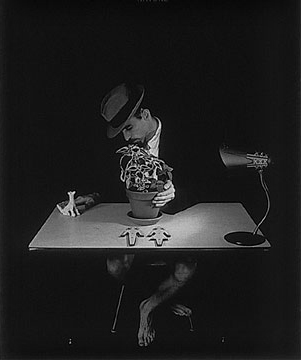 Whirligig: You were born and raised in Pittsburgh. Can you tell me a bit about your upbringing and family life.
Whirligig: You were born and raised in Pittsburgh. Can you tell me a bit about your upbringing and family life.
Jack: I grew up in a lower middle class neighborhood in the duplex that my mom grew up in. It was a racist neighborhood, very white, and conservative in lots of ways.
Whirligig: How did you come to be an artist?
Jack: My dad was into photography as a hobby, and he was very political and community-minded. He was responsible for getting various types of community programs in place like the community swimming pool, and music and art classes. So I ended up taking art and ceramic classes. Because of his interests in photography there was a darkroom in our basement, and I began to make photographs when I was 14.
Whirligig: Did he teach you?
Jack: He did. It’s weird to think about that because we didn’t have a great relationship.
Whirligig: Why performance art?
Jack: I like photography because it is a combination of creativity and expression mixed with an engineering, mechanical process. My photo education, while it was fine art, there was a lot of emphasis on technical skill. In fact you, couldn’t get through an undergraduate program without learning to work with chemicals and do all of your own processing.
By my mid twenties I moved from Pittsburgh to California and I was getting tired of two-dimensional images. My friend from undergraduate school, Timothy Vickers, was a performer in the Music Concrete movement happening in San Francisco. He was making cassette tapes of mixed found sound under the name of Deaf Lions. My first performance was accompanied by him in a San Francisco space on 10th St. It was a bombastic, cathartic, crazy thing, called “I’m bad.” That was 1987.
Whirligig: What brought you to San José?
Jack: I moved to Oakland because a good friend of mine moved out here. I moved away from Pittsburgh because it was dying economically, plus and I wanted to be in a place I could ride my motorcycle year round. In fact I moved by motorcycle. After working in San Francisco for a number of years in the photo lab industry, I moved to San José to go to grad school.
Whirligig: You were board president for two years and the performance art curator/emcee at Works/San José for more than 10 years. What are some of the highlights of that adventure?
Jack: The “What is Now Performance Art Festival” with John Fleck, that was my highlight. John Fleck is a well-known performer in L.A. He was one of the NEA 4, when the NEA was forced to revoke grants to a group of 4 artists due to the likes of Senator Jesse Helms. Fleck is an impressive performer. He has a huge stage presence with a command of the atmosphere when he is performing. That was a highlight. Many more, so many more . . . The Handshakes (Pete Humphrey). He also had this really fun, mysterious way of captivating the audience, a presence. Steve Durie driving his car in circles in the Japantown gallery is another standout.
Whirligig: Any disastrous experiences?
Jack: There were some flat performances. The closest thing to disastrous was a Vietnamese poet/performance artist. He did this piece that included trying to extract blood from his forearm with a syringe and he kept missing his vein. He repeatedly searched for a vein. It was pretty gruesome—some audience members, a lot of us actually, were squirming.
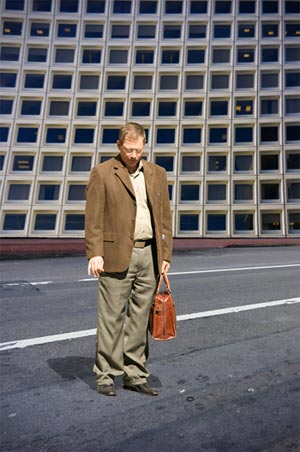
Whirligig: How did you get involved with Works and what did you take away from that relationship?
Jack: I came down to San JJosé for grad school and the only thing I found that I could relate to was Works, at that time it was on First Street. They had a Guerrilla Girls exhibition at the time, and it was the closest thing to the San Francisco art scene. Joe Delappe was in a graduate seminar class in my first semester at San José State. He got me to come to the gallery and help build the walls of the new space, which was in Japantown. I met the board president, Michael Martin, and the other board members there, all of them hammering away on the walls. That was in 1990.
I learned a lot about community and about my own interests in contributing to that community. I learned that maybe I stuck around too long. (laughs) As all things do, Works evolved and became something that I could not support wholeheartedly.
Whirligig: You did your undergrad at Ohio University and your MFA at San José State. How do you feel about your educational experiences? Did you get what you needed from art school?
Jack: Well I didn’t know what I needed exactly from my undergrad education. I didn’t know much about education actually. I knew Ohio had a good photo program and looking back it did. I got a lot out of it from the education but also from the social life. There were a lot of interesting people there that exposed me to performance art, music and photography.
San José State was good and frustrating at the same time. By that time my interests weren’t just photography. It was really performance and photography and whatever worked. San José State like a lot of schools was pretty rigid in terms of media. So even though they had spatial and pictorial designations it was really painting, photography, sculpture in their separate worlds, with computer art in its world. There was not enough mixing. Barbara DeGenevieve was there and she was a great attribute to the school and my working process. I felt like there wasn’t enough emphasis on the bigger picture of art making. There was a little too much emphasis on personal investigation.
Whirligig: What other schools focus on the bigger picture?
Jack: The Chicago Art Institute, RISD, Cal Arts, UCLA, UC Irvine, UC San Diego, Maryland Art Institute in Baltimore, Massachusetts Art Institute. There are schools out there. When I went to San José State some folks expressed an interdisciplinary approach. Sam Richardson was somebody who supported that. And there were some faculty that I didn’t study with who also supported it, but I wasn’t in to what I perceived as a Jungian spin on art making. I got a lot out of my fellow students, Lizzie Zucker-Saltz being a big ally of mine at the time. My best semester there was my first semester. I was taking interesting classes in the art and philosophy departments that generated new thinking and vigorous conversations.
Whirligig: Recurring themes in your work are economics, consumerism and globalization. Can you talk about your interest in these?
Jack: Ever since I was a little kid, say ten, eleven years old, I had an ethical problem with money. I don’t know where that came from. Especially since my neighborhood was white, conservative, and middle class—it was not the center of revolutionary politics. I was like the rebel hippy kid and I rebelled against profit motive at an early age. Then it got worse or was enhanced by the plight of my father who was one of the early victims of corporate downsizing and corporate maneuvering for profit. He was forced into early retirement in his late 50s after 30 years of working at Westinghouse as an engineer. Ironically, he had taken me to his lab right before that for one of those ‘show your kids where you work’ days. He was a metallurgist, basically, and losing his job drastically affected him. He identified with being an engineer. Not too long after that it was discovered he had cancer, from which he died in 1983.
Whirligig: Your undergraduate work—people shopping. . . So this has been a long time theme for you hasn’t it?
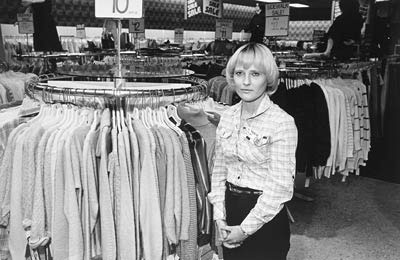
Jack: Yeah. I feel like economics . . . like there has been so much critical work and writing done from the feminist perspective, and the gay and lesbian perspective, and the multicultural perspective. For me, and it probably had something to do with being a white, heterosexual guy, economics underlie the cultural inequities that many groups were/are struggling to overcome. When they eventually get their foot in the door they often assume some of the same mannerisms as the previous power elite. It’s not a new thing. We’ve been talking about money for a long time. And my reasons for being interested in it are personal, as described before regarding my dad. . . I guess I’m sensitive to it. Just looking at the politics and concerns for the past 15 to 20 years, economics was largely overlooked . . . nobody was making art about it. I was doing performances about NASDAQ back when it was about to cross 10,000, and now has been over twelve and thirteen thousand, before crashing back down to sub nine thousand.
Whirligig: Several years ago you did a cross country motorcycle journey which involved geocaching for the sublime, as part of an art project called “The Perfect View” How did you come up with this concept?
Jack: It is a C5 concept largely. It is a product of C5. A lot of conversations around locative media and what to do with it preceded work on Perfect View. I oversaw the project and developed the core concept, but it was a collaborative work. We kept thinking about how could we use locative media in interesting ways and it occurred to us we could retrace famous paths, journeys, hikes. So we began tossing around different kinds of journeys we could reproduce using latitude and longitude coordinates and GPS devices. In one of those conversations, we came up with the idea of retracing the Lewis and Clark trail—imagining if you were them and coming upon a landscape for the first time, as a westerner anyway. What would you have seen and what impact might it have made? What were the key moments in that journey that were memorable? After researching and tracking what bits of that journey that are known and what other famous journeys there are in California, it seemed too difficult to do because the trails aren’t necessarily accessible. You can’t get to them. Sometimes they are freeways, which is interesting, but all in all it didn’t seem like that angle was going to work. And then the idea of the Perfect View came up, and at the same time Brett Stalbaum was looking into geocaching — one thing led to another.
Whirligig: The exhibition includes panoramic photographs of sublime landscapes. How many pieces are there?
Jack: The sites are areas thought to be ‘sublime’ by the geocachers who submitted their GPS coordinates. Six pieces are finished, potentially more could be finished, and some can’t be finished because of the difficulty in photographing them. The images are digitally stitched together to make large panoramas, and some locations were too complex to stitch together. For example there was a waterfall in Big Bend National Park that you can’t get more than 30 feet from, so photographs had to be made at extreme angles.
I didn’t want single frame photos because large scale was important for visual impact. The images could be snapshots and that would present the location, but I wanted the pieces to work on a visceral level as well, via scale and craftsmanship. So it is definitely conceptual art, but a lot of conceptual art tends to overlook the physicality. Which for me loses some engagement. I wanted the pieces to appeal, to draw people into the concept underlying them.
The pieces are triptychs, combining the site panoramas with aerial satellite photographs of the locations showing exactly where I was when making the photographs, and computer generated 3D images of the topographies generated using USGS (United States Geological Survey) data. Also, there are cache items, ‘artifacts’ collected from the various cache boxes: little plastic dolls, keyfobs, trinkets, maps, etc.
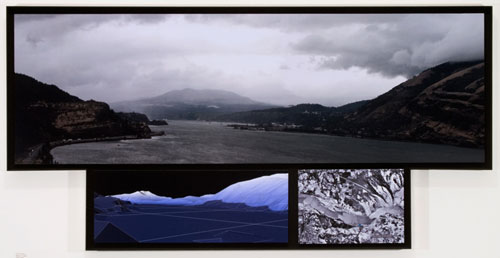
Whirligig: How does the exhibition compare/relate to your expectations of the project during the planning stages?
Jack: It’s simpler. It had gone through some various designs. The early designs had a lot more imagery in the pieces as opposed to being just a triptych. More panels and the panels would have included images shot around each site, like travel photos depicting the surrounding events — pictures of the people met and the places nearby. My interest was in conveying that the impact of a place was related to the surrounding events. I decided ultimately to keep it a triptych though, because as an artwork the simpler layout had a stronger impact.
Whirligig: How did you set up your trip to geocache the sublime?
Jack: I put out a request for the goecachers across America, and there are thousands of them, who utilize a website called geocaching.com. I put out a request on the national forum and all the regional forums asking for the latitude and longitude coordinates of places that they thought were sublime.
Sublime is a tricky word, both because it is hard to define and because in the art world, at that time, in 2003, talking about the sublime was not common because it so easily provoked New Age ideas about utopian spirituality and related tendencies, so it was used with some trepidation, and with some intention to provoke. What we really wanted to talk about, what I really wanted to talk about, was the parallels between our time, which has seen a lot of technological development, and the 18th century, which initiated the Industrial Revolution and the Age of Enlightenment. That was also the era when landscape as a genre came about. I really wanted to make parallels between these developments and the developments in our own time. Asking these geocachers for sublime sites generated conversations about sublime, what it is, how subjective or objective it is, who was Kant and Burke and what did they think about the sublime, and so on — that was kind of fun. I got about 50 submissions, some of them not usable because they were obvious, like the Grand Canyon. I didn’t want to shoot the Grand Canyon. And some of them were unusable because I specifically asked for coordinates. I wanted a specific spot to go to. Not a general site like the Grand Tetons. So a lot of sites were eliminated. Some were eliminated because I had to make a route that was doable in the time that I had. I ended up with about 25 spread out across the country.
Whirligig: How long was your journey and where did it take you?
Jack: It was 13,000 miles approximately. It took a little over 2 months with a couple weeks in there rebuilding my motor, which was very stressful.
Whirligig: Any particularly unusual experiences along the way?
Jack: Lots of them. I ran into a huge rattlesnake. One of the first caches was in Texas south of Austin a ways. I went to a cache with some other geocachers down there who were also motorcycle riders and we road to this cache out in the country. The cache, which is called “Roe Versus Wade,” was submitted by a cacher who goes by the name of Snoogins. Snoogins said he largely submitted this cache because in fact the closest town to it was Sublime, Texas. But on top of that the cache was located in a riverbed surrounded by private property, owned by people who preferred that you not to violate their private property, to put it politely, inhabited by three types of poisonous snakes—water moccasins, copperhead, and rattlesnakes. The best way to get to this cache, according to Snoogins’, was by going to a bridge located a mile south of it, and by rowing up the river or wading up the river. We checked out the bridge and it just so happens that it had been raining in Texas for a while and the river was high, fast and muddy. Wading or rowing was out of the question. So we went to the point on the road nearest to the cache and parked our bikes. Lo and behold, about four feet away from me on the trunk of a tree was a rattlesnake—the biggest wild snake I have ever seen. Its body was literally 3 or 4 inches in diameter. And that was before we hiked in through tall marsh grass to get to the cache. That’s a memory of a lifetime.
Whirligig: But you went in and got the cache.
Jack: We went in and got the cache. We got in about half way and came across a tree house with an all terrain vehicle parked below it, and we thought for sure we would encounter one of the local people, with a barrel pointed our way. Keep in mind this was a place where dirt roads are the norm, and the households are trailer homes strewn with trash, an impoverished part of Texas provoking the fears one might have about the deep south, and Texas, and people with shotguns. It was scary. But we did find the cache. It was in the mud, tied to a log. During the rains it must have been submerged in the mud. It was very difficult to find. We opened up the cache box and it was filled with a lot of good items, actually. Snoogins didn’t just throw in junk, there were nice drill bits—a brand new package of drill bits—for instance. There was a whole bunch of stuff in there. Cache boxes usually have a log book that people write in—who they are, where they’re from, when they found the cache, and any story they had to tell associated with their find. The people who found it before us were part of this nighttime geocaching group in Austin that goes out looking for caches at night only. They found this cache at midnight! It was hard enough to find in the daytime, and not only hard to find but scary. Walking through tall grass, the snakes, the locals—it was impressive. It’s funny because the site itself, we were just in the woods next to a river. It was nice but not what we would think of as sublime today. We tend think of sublime as simply monumental mountains and grand vistas. There we were in the middle of trees with mosquitoes all around us. On the other hand that’s where the 18th century writing about sublime comes into play. Those guys were writing about the sublime as a force that was so strong that you felt mortally threatened. It wasn’t just beauty. It was an intense encounter with nature where you felt the disproportionate relationship between you and nature, and how small you are in the face of nature, vulnerably small. So encountering these snakes and potentially encountering more snakes was closer to what Burke would be describing, rather than looking out at the Grand Canyon and saying, “Wow! This is impressive.”
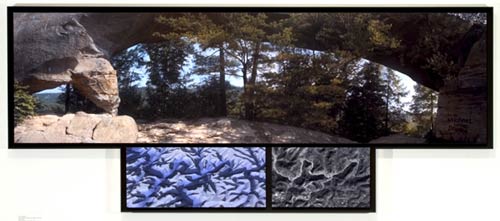
Whirligig: What was the most memorable cache?
Jack: I have many memorable ones. Another one that is memorable is in Big Bend National Park. It’s memorable because it is so different from what most of the park is about. I was there in late June and it was really hot. The park is largely a desert. One of the problems with my bike is that it doesn’t have a great mileage range due to capacity of the gas tank. I ran out of gas twice on the trip and I almost ran out of gas trying to get to this cache at night.
The cache was located at the base of a rock outcropping in the park. In order to get to the cache I had to drive quite a few miles on paved roads to get to the backside of the rocks, and then quite a few miles on really bumpy rocky roads to get within hiking distance of the cache. This was especially hard on a road bike like mine. It was 45 minutes of 5 mph driving on this really rocky road to get to the trailhead. Then another half hour hike up to the base of the outcropping. You hike up the hill and eventually come to what they call a wadi. The guy who created the cache, Fat Boy Slim, used the term. It is a small body of water that comes and goes with rainfall. You hike up out of this really hot, dry climate into a cool, humid, kind of tropical climate with waterfalls pouring off a cliff. There is a pool of water with butterflies and dragonflies weaving around. It is a totally changed environment from the surrounding desert. That was very memorable.
Almost all of the caches have interesting stories that go along with them.
One of the really easy to find but beautiful sites was in the Adirondacks. To get there I was driving up along a creek in a narrow valley and I couldn’t understand where the cache was located because the GPS device was pointing at a cliff. Finally I found a road that led me up and over the cliff to a farm. This was a ‘virtual cache,’ meaning that there isn’t actually a cache box, the cache is just about the view. Looking over the fields of the farm, about 15 to 20 miles beyond the field I saw ridge after ridge of misty mountains which were the Adirondacks. It was quiet and absorbing. While the search for the cache was only mildly challenging, the view was impressive—the complete opposite of the snake scenario.
Whirligig: Did you find the sublime?
Jack: Yes. I found the sublimes.
Whirligig: Have you set any caches?
Jack: Have I created any caches? No.
Whirligig: Where does your head go when you are riding your motorcycle on a long trip like that?
Jack: Mundane things, like the change in temperature, the change in road quality, or the discomfort of being on a bike doing 400 miles a day for multiple days. If you get on the right road you get into a riding zone. By right road I mean a technically difficult road that requires concentration—everything else falls away and I focus on finding the best line through the turns. It’s a zen thing. (Laughs)
Whirligig: Are you still geocaching?
Jack: Not really. I did in Baja California, but that was the last time. Perfect View wasn’t about geocaching per se. I can see why people get absorbed in it. Some of the people I met on the trip were obsessed with it, one woman in particular was to the extent that it was a sore point in her marriage.
Whirligig: How did you get involved with C5?
Jack: I was asked to be a part of it. I was a founding member before it was officially established. I was asked by Joel Slayton.
Whirligig: Were you studying with him or was that after?
Jack: It was after. It was 1997.
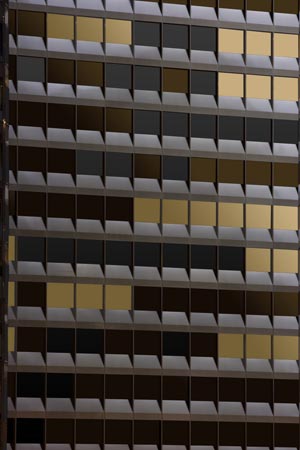
Whirligig: What did you take away from that collaborative experience?
Jack: The power of working with really smart people. The ability to create complex artworks that are, I don’t know, maybe they are possible on an individual basis . . . The artwork that we made was conceptually complex and, especially towards the later years, became both conceptually and physically complex. But, you know, the difficult things too, like people vying for recognition. The difficulty of being friends with people you are collaborating with.
Whirligig: Would you be part of another collective? Is that something you would look for in your future?
Jack: Not for a long time. All through C5 I made my own art as well and felt a certain frustration at not being able to devote more time to it. It’s actually nice to be able to be focused on my work now.
Whirligig: You have a project coming up for the Conflux Festival in New York which involves geocaching. Can you tell me a bit about that and what you hope to achieve with it.
Jack: The project is called Manhattan Cache—it will be introduced at Conflux. It takes the form somewhat of geocaching in that there will be cache boxes located on the perimeters of Manhattan neighborhoods with the latitude and longitude coordinates of those boxes published. So if you want to use it as a kind of geocaching experience you can do that. But there will also be treasure maps published for it and just simple directions if you don’t want to deal with mapping. The idea is to get people from different neighborhoods in Manhattan to contribute items to the cache that represent their neighborhood in one way or another, experiences they had in the neighborhood, for instance. If they grew up in the neighborhood maybe they have historical elements left from their childhood. They can contribute photographs or poems. It is intended to get the residents of New York to think about what makes their neighborhood their neighborhood. What makes their neighborhood different from the adjacent neighborhoods, If they are different. It’s an attempt to instigate some dialogue between people through objects and writing about where they live and what makes it special to them. It has a geocaching artifact aspect to it, and those will be documented and archived on the website. There will be a blog aspect. Each box will have its own blog and the people who contribute to the boxes will hopefully make blog entries.
Whirligig: When is that happening?
Jack: September 11.
Whirligig: Oh. 911. Is the festival on that day?
Jack: The festival lasts four days but I think for Manhattan Cache to work it has to be longer than that. It will be part of the festival but it will run longer.
Whirligig: Why is your work important—to you or to anyone?
Jack: Well there is a big difference. For it to be important to me it has to talk about developments in society that raise concern. I try to make the work conscious of the history of its own message. For instance I’m working on what is basically street photography, but it’s not street photography because the images are composites. It’s important because conceptually it is talking about ideas that are important to society, and the work takes advantage of technology that is available today — it’s not the technology that was used at the height of street photography in the ’60s/’70s. It is important because it addresses big issues technically and conceptually and it speaks on a personal and a societal level. I think that’s a huge issue. Where is the individual in the collective? Where does one bleed into the other and where do they retain separate identities? How to they change and yet remain relevant to one another.
Whirligig: What do you want people to get from your art?
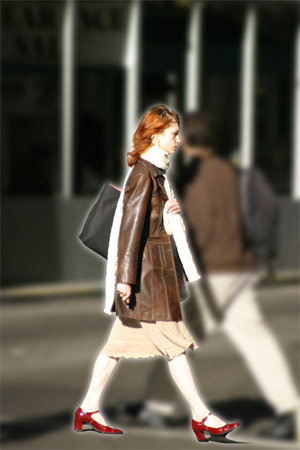 Jack: I want them to . . . well it’s different for different pieces, but what comes to the fore right now is that it puts them in a state of quandary. It encourages them to be reflective on the complicated nature of life. I mean that in a political, economic, philosophical way. Things aren’t clear-cut. I think anybody who is mature enough, anybody who has attained middle age realizes with all our knowledge and all our power we still don’t know how to live peacefully, for example. We only know how to answer simple questions. I know I, myself, and I think a lot of people, are faced with a sense of some degree of confusion, or some degree of bewilderment, or something unanswerable about what the point of it all is. And I don’t mean that that is necessarily a bad thing, but it exists, and it often gets overlooked.
Jack: I want them to . . . well it’s different for different pieces, but what comes to the fore right now is that it puts them in a state of quandary. It encourages them to be reflective on the complicated nature of life. I mean that in a political, economic, philosophical way. Things aren’t clear-cut. I think anybody who is mature enough, anybody who has attained middle age realizes with all our knowledge and all our power we still don’t know how to live peacefully, for example. We only know how to answer simple questions. I know I, myself, and I think a lot of people, are faced with a sense of some degree of confusion, or some degree of bewilderment, or something unanswerable about what the point of it all is. And I don’t mean that that is necessarily a bad thing, but it exists, and it often gets overlooked.
Whirligig: What do you appreciate in other people’s art? What do you look for?
Jack: Conceptually complex awareness of history and intelligence expressed in technically complex ways. Well, simplicity has its gifts, too, doesn’t it?
Whirligig: Some of these things that you are talking about, work that is conceptually complex with an awareness of history, and technically complex, and art that is philosophically interesting. Some of that is very subjective. What one person has awareness of another person doesn’t see. . .
Jack: Well I’m not asking for a piece to say, “In 1923 life was about this. . .” It doesn’t have to say that, but I want to know that the artist is thinking at that complex level. I want to see that the artist is interested in things beyond themselves; that they are interested in how they relate to a bigger picture. I want to see that they understand that the big picture is composed of them and they are composed of the big picture, too. That life is not just about ‘I had a nice walk through the woods today.’ Well, I don’t know if that’s a great example. In a fine art aspect, the work that interests me is the work that is not just formally engaging, and not just conceptually complex, but that is melding these two. The Minimalists of the ’60s and ’70s were not necessarily technically complex, and they can be kind of philosophically simple, yet their effort to pare things way down, to make the simplest thing, was radical within the broader historical context. They weren’t recapitulating the surrealist work, or the expressionist work, they were trying to take a new twist, to follow a new route based on what they perceived in their context. I want to see artists doing that. I don’t want to see somebody who can make another nice photograph like so-and-so from that era. You make a nice Lee Friedlander photograph, for example. Great! I love Lee Friedlander. But if you are working today I want to see something new. Take the Lee Friedlander photo and twist it, go somewhere new with it – address the context you are working in.
Whirligig: Is it innovation or originality that you find compelling? You know I hear people say there is nothing new anymore.
Jack: There is always something new. People have said there is nothing new for ages, right? This seems especially true in photography. “It has all been photographed before.” But there will always be something new: society changes, technology changes. I was pretty critical of suburbia growing up and I did a series of photographs of suburbia, critiquing it in my 20s, but one of the things I’ve noticed about suburbia is that if you go to a track home development you often see that eventually the people who are living there have customized it. They don’t want their house to look like, O.K. there is a certain amount of keeping up with the Jones, but there is also “I don’t want to look like I’m keeping up with the Jones; I want my house to look like my own.” There are little, subtle things that people do: planting trees, changing color schemes—people modify things. People are almost, I wouldn’t say inherently creative because people don’t always just do their thing, but people can take very mundane, mass-produced things, and slowly modify them to be unique on some level.
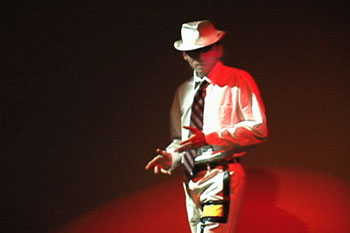
But for me, seeing a photograph of a common subject with minor changes is not enough. I want to see that the creator is thinking about more than “I got a new aesthetic spin.”
Whirligig: How does it feel to leave San José for New York?
Jack: Exciting. Overwhelming. There is so much to do before leaving. I reached the limits of what I could accomplish in San José and I need to take the next step. I think being in New York will be something like being in grad school—there are more people who are interested in art there.
Whirligig: Is teaching your goal in New York?
Jack: Well I don’t know because I’m in a process of trying to figure out who I am, and part of me thinks that I haven’t gotten a full time position because maybe I’m not suppose to be teaching. Maybe I’m just not the right personality to fit into that world. Maybe I’m supposed to be attempting a career as a full time artist. I like teaching though. I like the interaction with people by and large. It has its frustrations, too. It’s been an essential thing because it provides a captive audience for talking about art, communicating about art. Whereas most of our society doesn’t really want to consider. . . is not interested in art. It’s a hard thing to keep making art when you don’t feel like anyone is interested in it. In teaching at least you get an inkling of that, though granted you still have students who by and large are just trying to figure out how to make a living. It’s the minority that is thinking philosophically. Hopefully New York will provide a larger community that is sympathetic and interested in that pursuit, the pursuit of making art that is philosophically interesting.
Whirligig: What will you miss most about here?
Jack: I’ll miss riding. I’ll miss running. I’ll miss friends.
Whirligig Interview with Jack Toolin conducted on the eve of his departure from San José by Nanette Wylde.
